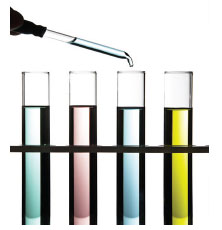Lubricant Additives Market Outpaces the Overall Lubricant Growth, which Varies by Additive Function
 PARSIPPANY, NJ – February 8, 2016 - Global lubricant additive consumption exhibited moderate growth in 2015, estimated to have increased by 1.0% over 2014. This consumption is forecast to increase by 1.6% through 2019, with strong growth stemming from regions like Asia-Pacific, Africa, the Middle East, and South America, according to the recently published Global Lubricant Additives: Market Analysis and Opportunities report by global market research and management consulting firm Kline.
PARSIPPANY, NJ – February 8, 2016 - Global lubricant additive consumption exhibited moderate growth in 2015, estimated to have increased by 1.0% over 2014. This consumption is forecast to increase by 1.6% through 2019, with strong growth stemming from regions like Asia-Pacific, Africa, the Middle East, and South America, according to the recently published Global Lubricant Additives: Market Analysis and Opportunities report by global market research and management consulting firm Kline.
The growth rate for lubricant additives is higher than the growth rate for finished lubricants. Growth varies significantly across function class. For instance, the focus on long-lasting engine oils, engine cleanliness, and fuel economy drives an increase in the usage of dispersants, antioxidants, and friction modifiers. Greater use of multigrade engine oils drives the usage of viscosity index improvers. In contrast, due to issues of compatibility with emission control devices, the use of detergents and antiwear additives is dampened.
Heavy duty motor oil, passenger car motor oil, and, in the industrial lubricants category, metalworking fluids, are the top additive-consuming categories, accounting for three-fourths of total additive consumption.
Asia‐Pacific is the leading region globally in finished lubricant consumption, accounting for over 40% of the total. North America is the second‐largest lubricant consuming region, accounting for over 20% of the total volume. Furthermore, consumption in Europe accounts for approximately 17% of the total consumption.
Since 2010, the global lube additive market has grown at 1.8% per annum due to lube demand growth and the transition to higher quality levels. Lube additive demand for metalworking fluids showed strong recovery in 2012-2014 following a decline in 2008-2012. Except for passenger car motor oil and metalworking fluids, demand growth slowed, and there was a decline in demand in all product categories.
According to Milind Phadke, Director in Kline’s Energy Practice, “The global lubricant additive market will grow in line with overall lube demand growth. In the automotive engine oil segment, penetration of new quality levels, the shift to light viscosity oils, and extended drain intervals will drive changes in the type of additives used.”
Phadke adds, “In the metalworking fluids industry, the key formulation drivers include: compliance with HSE requirements (elimination of harmful chemicals), introduction of new machining techniques, and changes in metals processed. In general industrial oil, formulation will be driven by the severity of operation, reduction in equipment size, extension of service intervals, the use of vegetable oils, and the displacement of Group I by Group II and Group III basestocks.”
These findings and more are available in the recently published Global Lubricant Additives: Market Analysis and Opportunities report. This study provides a detailed independent appraisal of the global lubricant additives market. Estimates of additive consumption by end-use applications, additive function, and regions are provided. Demand estimates for different additive function classes are further broken down by chemical classes.
About Kline & Company
Kline is a worldwide consulting and research firm dedicated to providing the kind of insight and knowledge that helps companies find a clear path to success. The firm has served the management consulting and market research needs of organizations in the agrochemicals, chemicals, materials, energy, life sciences, and consumer products industries for over 50 years. For more information, visit www.KlineGroup.com.
